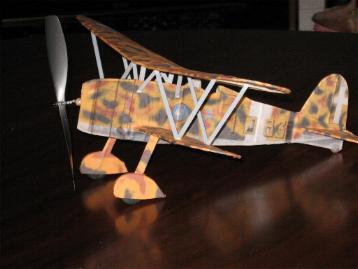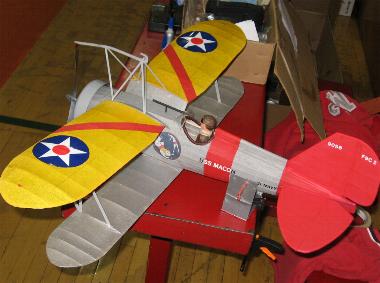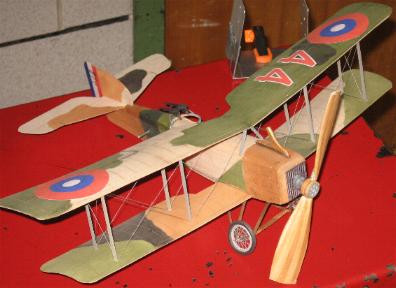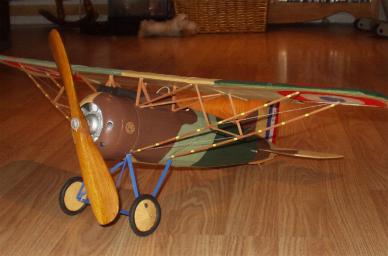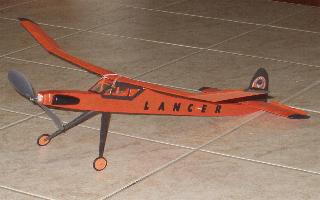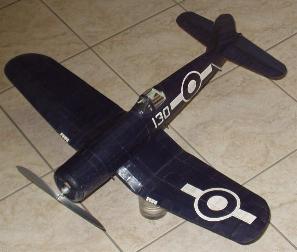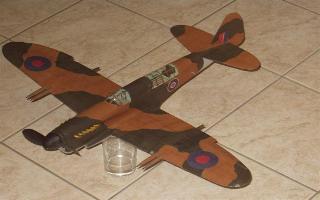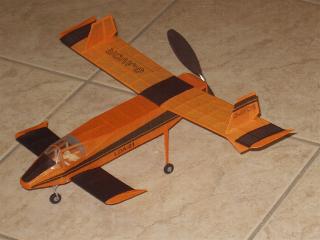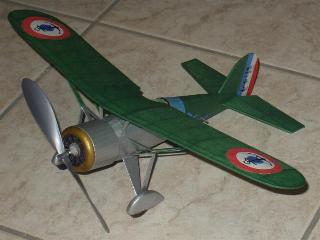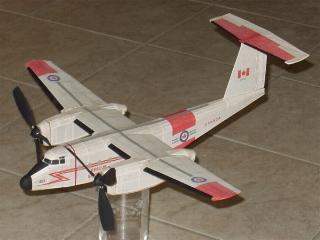Guillows Lancer
Another outdoor model, flying happily indoors, the Lancer is an excellent beginners plane
and an excellent flyer. At about US$ 9.00, the kit is great value and I was surprised at
the quality of the wood, die cutting and the plans. I made several minor changes to the
model, but I believe the model will fly nicely if built unmodified. The only real weakness
of the model is the landing gear; it will break after the first few flights. I would
suggest leaving it off, or, as I did, replace it with bent wire. I used one piece of wire
with about 3cm sandwiched between balsa and glued between the longerons on the bottom of
the fuselage.
Video
- wingspan: 61 cm
- weight: 25 g
- power: 1 stands of .175 inch
- design: Guillows kit (modified)
- built: 2006
----------------------- 